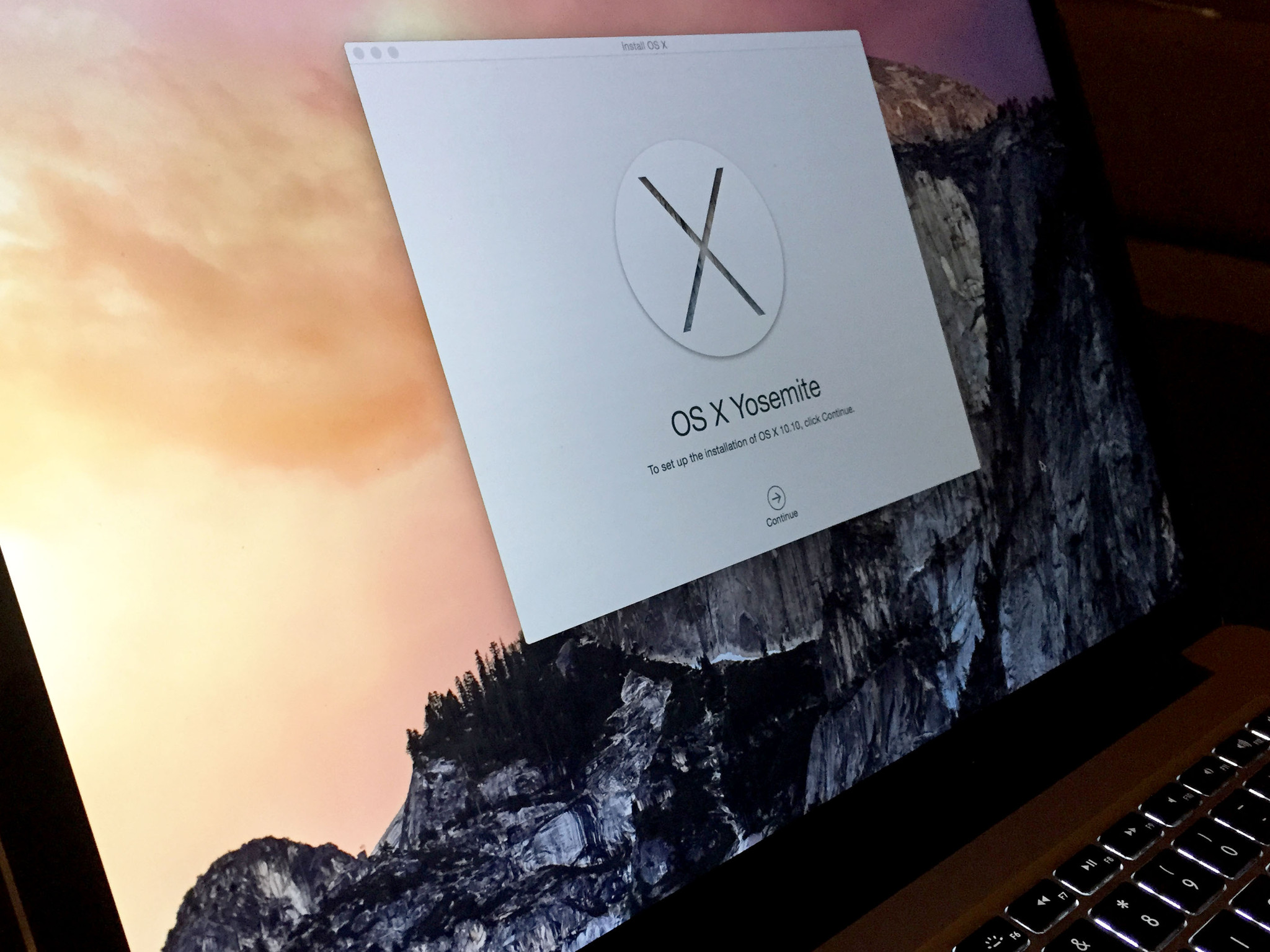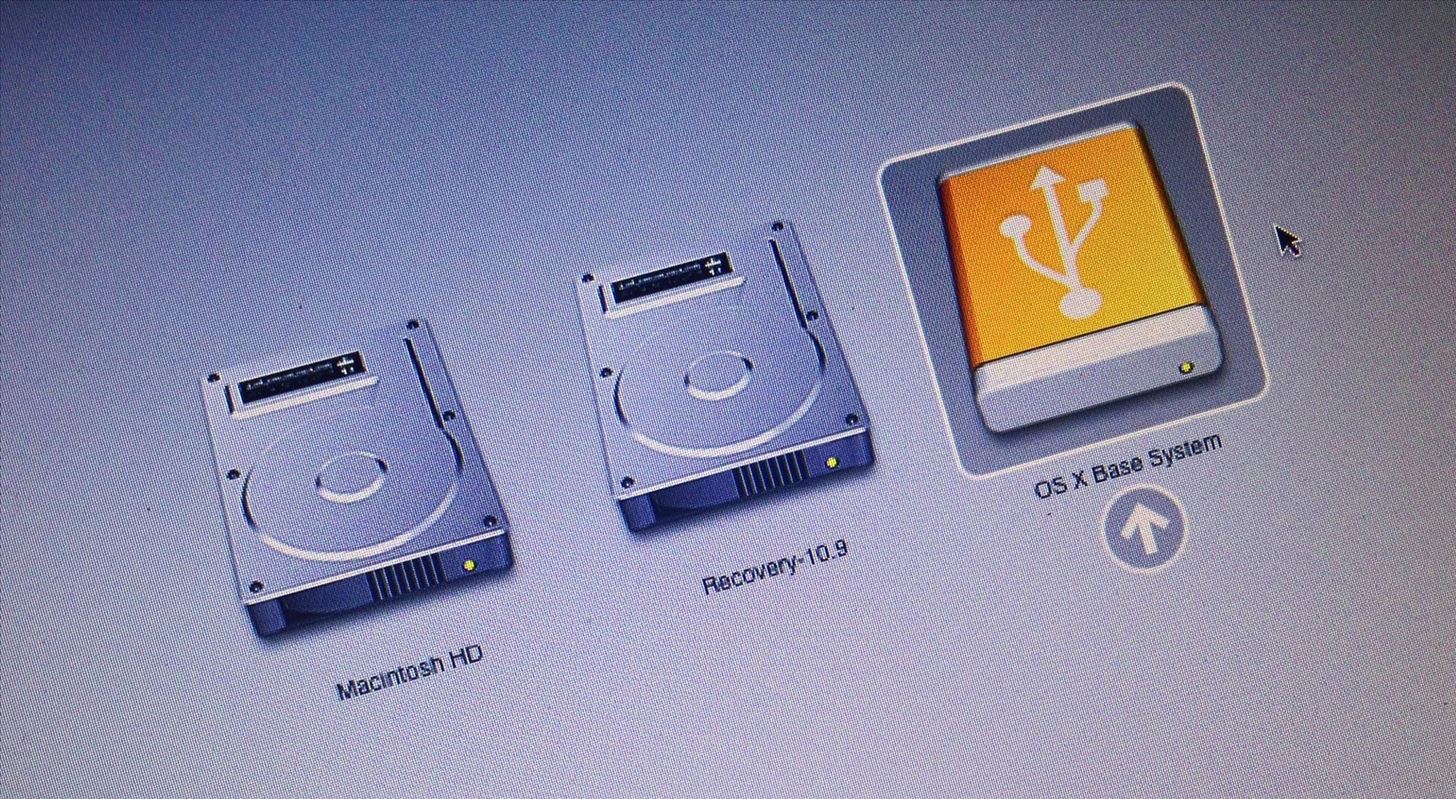It's much easier to use a real Mac to make the installer. Buy, borrow or rent one for a few hours to make the USB. Can't offer any other advice than that. Try finding a used 2010 Mac mini, they don't cost much and work perfectly when using the gibMacOS method. There are many ways that you can create a bootable Mavericks USB Drive but this seems to me the far easiest way to do so. In this article I will assume that you already have a reasonable grasp of the OSX system and cut out the lengthy text: 1. Download Yosemite from the Apple Store. Yosemite can be downloaded directly from Apple Store here.
OS X Yosemite download 10.10.1 released on November 2014 with a number of updates after the previous original Yosemite version 10.10 release. The Yosemite 10.10.1 was the most flexible operating system for the time being for Macintosh computers. Most of the Apple Mac users were shifted to this update because the update solve number of bugs on the system and it improves the reliability than the original OS X Yosemite download release.
System requirements
Aug 14, 2015 OS X Yosemite is Apple's operating system for Mac. An elegant design that feels entirely fresh, yet inherently familiar. The apps you use every day, enhanced with new features. And a completely new relationship between your Mac and iOS devices. OS X Yosemite will change how you see your Mac. And what you can do with it. Redesigned interface. Jul 05, 2019 Download Mac OS X Yosemite 10.10.3 latest free latest standalone offline bootable DMG image. The MacOS X Yosemite 10.10 is a very powerful operating system for Macintosh with better stability, security, and compatibility features.
Os X Yosemite 10.10.2 Bootable Usb Dmg File Software
Opening the dmg does produce an installer, terminal indicates this is 'Install OS X Yosemite.app' which appears consistent with the Apple usb boot installer instructions. The dmg has been packaged by inmac.org, who appear associated with quite a few mac-specific torrents. See How to make a bootable OS X 10.10 Yosemite install drive at macworld.com. Option 2 worked for me: Find the Yosemite installer on your Mac. It’s called Install OS X Yosemite.app and it should have been downloaded to your main Applications folder (/Applications). Sep 22, 2018 A DMG file, which is also known as a DMG image is a mountable disk image created for the Mac OS X. It has the raw block data normally compressed and sometimes encrypted. DMG files are often used to install OS X software that is downloaded from the internet to mount a virtual disk on the Mac PC when opened. Whereas, Mac OS X general public (non-developers) and developers can also install OS X 10.10.2 via iTunes for manual installation through Bootable USB and Bootable DVD for Free after Download OS X Yosemite 10.10.2 Final Setup / Update (Delta / Combo).DMG Files via Direct Links. Ps4 remote play dmg 10.10.5.
All the Macintosh computers that run the Mac OS X Mountain Lion are eligible for running the OS X Yosemite download 10.10.1. But if need to get the maximum of the performance please consider the system requirements mentioned below.
8GB storage
2 GB RAM
Compatible Mac Devices for the OS X Yosemite 10.10.1

iMac, MacBook, MacBook Pro, MacBook Air, Mac Mini, Mac Pro, and Xserve
- It increases the connectivity of Wi-Fi
- Mailing is very comfortable when you are using more than one email service providers.
- Time machine displayed older updates. Solve the problem with the update.
- Using Microsoft Exchange Server shows more reliable than OS X Yosemite original release.
- Connecting to remote computers improves with the update of Yosemite.
- Solve the problem was in the notification center widgets and actions.
- Show the updates on Mac Apps store previously didn’t show.
- Solve the problem courses with the Japanese language in the system.
Method one
You can download the OS X Yosemite from the Mac Apps Store
- First, you need to sign in to the Mac Apps store before you are going to download the OS X Yosemite.
- Then search for the OS X Yosemite installer from the search bar appears on the top- left the corner.
- You will be able to see some links for the download the file. Choose the correct link for downloading and go through the download process. ( for the downloading you must need to log in to the Apple Mac Store using the Apple ID).
- After the downloading complete, a window will pop up asking to install the OS X Yosemite. You can continue this process, but it is very important to remember, please keep a backup of your files and data.
- Or you can stop the normal installation and create a bootable USB installer with the downloaded OS X Yosemite download installer.
- Learn about how to create a bootable USB installer to install the Mac OS X Yosemite.
Method two
You can install the OS X Yosemite download on your Mac computer on empty volume as a clean install
This is an easy method to install the Mac OS X Yosemite. Because you are installing the OS X version on an empty volume which is no any available data on it. So you do not need to keep any backup to use. You all have to do is just clean all of the volumes on your Mac computer and install the OS freshly on it. You can use bootable USB installer for installing the Yosemite OS X version. Also, you can learn about creating a USB installer for the Google, YouTube, and websites. The Apple official website also gives information about creating a bootable installer for Mac OS installation.
Equipped with a Capto C5 tool spindle as standard, max. Simultaneous 5-axis machining of complex parts with the direct drive motor (DDM) installed in the B-axis. Dmg mori ntx 1000 szm lower turret unclamp engine. Spindle speed of 12,000 rpm, 20,000 rpm (Option)High precision. Thoroughly controlled thermal displacement by cooling oil circulation in the bodyHigh rigidity. The B-axis rotation range of 240° and rotation speed of 100 rpm, the X-axis travel of 17.9 in.
Bootable Usb Rufus
Download the OS X Yosemite 10.11.1 update from here…
These advanced steps are primarily for system administrators and others who are familiar with the command line. You don't need a bootable installer to upgrade macOS or reinstall macOS, but it can be useful when you want to install on multiple computers without downloading the installer each time.
What you need to create a bootable installer


- A USB flash drive or other secondary volume formatted as Mac OS Extended, with at least 14GB of available storage
- A downloaded installer for macOS Big Sur, Catalina, Mojave, High Sierra, or El Capitan
Download macOS
- Download: macOS Big Sur, macOS Catalina, macOS Mojave, or macOS High Sierra
These download to your Applications folder as an app named Install macOS [version name]. If the installer opens after downloading, quit it without continuing installation. To get the correct installer, download from a Mac that is using macOS Sierra 10.12.5 or later, or El Capitan 10.11.6. Enterprise administrators, please download from Apple, not a locally hosted software-update server. - Download: OS X El Capitan
This downloads as a disk image named InstallMacOSX.dmg. On a Mac that is compatible with El Capitan, open the disk image and run the installer within, named InstallMacOSX.pkg. It installs an app named Install OS X El Capitan into your Applications folder. You will create the bootable installer from this app, not from the disk image or .pkg installer.
Use the 'createinstallmedia' command in Terminal
- Connect the USB flash drive or other volume that you're using for the bootable installer.
- Open Terminal, which is in the Utilities folder of your Applications folder.
- Type or paste one of the following commands in Terminal. These assume that the installer is in your Applications folder, and MyVolume is the name of the USB flash drive or other volume you're using. If it has a different name, replace
MyVolumein these commands with the name of your volume.
Big Sur:*

Catalina:*
Mojave:*
High Sierra:*
El Capitan:
Create Bootable Os X Usb On Windows
* If your Mac is using macOS Sierra or earlier, include the --applicationpath argument and installer path, similar to the way this is done in the command for El Capitan.
After typing the command:
- Press Return to enter the command.
- When prompted, type your administrator password and press Return again. Terminal doesn't show any characters as you type your password.
- When prompted, type
Yto confirm that you want to erase the volume, then press Return. Terminal shows the progress as the volume is erased. - After the volume is erased, you may see an alert that Terminal would like to access files on a removable volume. Click OK to allow the copy to proceed.
- When Terminal says that it's done, the volume will have the same name as the installer you downloaded, such as Install macOS Big Sur. You can now quit Terminal and eject the volume.
Use the bootable installer
Determine whether you're using a Mac with Apple silicon, then follow the appropriate steps:
Apple silicon
- Plug the bootable installer into a Mac that is connected to the internet and compatible with the version of macOS you're installing.
- Turn on your Mac and continue to hold the power button until you see the startup options window, which shows your bootable volumes.
- Select the volume containing the bootable installer, then click Continue.
- When the macOS installer opens, follow the onscreen instructions.
Intel processor
- Plug the bootable installer into a Mac that is connected to the internet and compatible with the version of macOS you're installing.
- Press and hold the Option (Alt) ⌥ key immediately after turning on or restarting your Mac.
- Release the Option key when you see a dark screen showing your bootable volumes.
- Select the volume containing the bootable installer. Then click the up arrow or press Return.
If you can't start up from the bootable installer, make sure that the External Boot setting in Startup Security Utility is set to allow booting from external media. - Choose your language, if prompted.
- Select Install macOS (or Install OS X) from the Utilities window, then click Continue and follow the onscreen instructions.

Learn more
A bootable installer doesn't download macOS from the internet, but it does require an internet connection to get firmware and other information specific to the Mac model.
Download Os X Yosemite Dmg
For information about the createinstallmedia command and the arguments you can use with it, make sure that the macOS installer is in your Applications folder, then enter the appropriate path in Terminal: